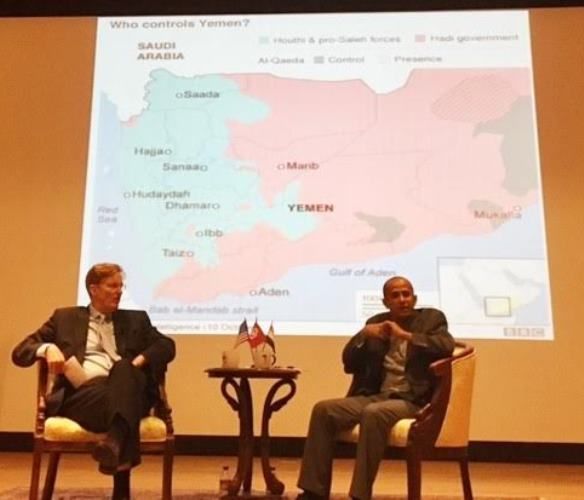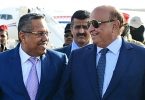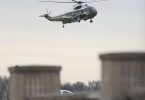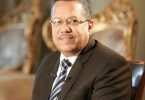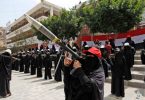NORMAN, Okla. – At the time where the civil wars in Syria and Iraq are at the forefront of the international scene, Waleed F. Mahdi, a native of Yemen and assistant professor at the University of Oklahoma, talked on Yemen’s own civil conflict at the Sam Noble Museum this past Monday along with the Director of the Center for Middle East Studies and OU Prof. Joshua Landis.
And as it could be seen with the Syrian conflict, the civil war in Yemen (population: 25 million), where 10,000 people have already been killed and 80 percent of the population needs humanitarian help, is more complex than a large part of the media and experts believe, the experts explained while at the Sam Noble Museum.
Mahdi said there are two wars in the war. The most important is the civil war between Houthi and former president’s loyalist against the actual president forces and his international allies. The second war is between the various political and religious groups such as the socialist, radical Islamists, Al Qaeda, Sunni moderate and Zaydi Shia.
He added the Houthi rebels in the north of the country are mostly Zaydi Shia.
“Zaydis are the closest to the Sunni in term of religious practices. They have been call the Shi’a of the Sunni and the Sunni of the Shia,” Mahdi said.
However, Mahdi said that during the last 30 years, Saudi Arabia has had a lot of influence over the Zaydi community in Yemen to the point where Zaydis and Sunnis are often combined.
“Zaydi is now mostly used not has on the religious ground, but tribal ground,” Mahdi said. “For some Zaydi is used as a religious way, tribal identity or even for political purpose such the former president Ali Abdullah Saleh.”
To conclude on this information Mahdi said all these differences combined together make the Yemen conflict unique and not a one way war between Shia and Sunni and Iran and Saudi Arabia.
“Sectarianism has never been a major issue for most of the Yemenis until recently,” Mahdi told the group at OU.
Concerning the role of Saudi Arabia in the conflict, Mahdi said King Abdullah Saud, the previous monarch, was more aware of the complexity of Yemen. But his death in January 2015 and the handling of the issue by the new Deputy Crown Prince Mohammad bin Salman has complicated the situation.
“This new Deputy Crown and pretender to the throne wanted to test his power and thought he could end it all in few strikes,” Mahdi said, noting they created more condition for terrorism.
Mahdi also said the Saudi government is seen as part of the conflict rather than a mediator, even their first official motivation was to re-instore the democracy in Yemen, which is “a joke” when one understands that Saudi Arabia not a democracy.
Besides, Mahdi added that Iran has also an interest to support the Shia minority in Yemen as they do in Syria, Lebanon, and also in Iraq and Bahrain where the population is predominantly Shia.
“What we see with the rise of the Houthis, Iran is getting somehow the upper hand,” Mahdi said adding it greatly increased the intervention of the Saudi in Yemen that consider this country has their backyard.
The US is also to blame in this conflict, he said, as they supported the Saudi military intervention from the beginning by providing information, munitions and other technical support.
The drone war program in place since several years has also accentuated the radicalization of the Yemenis against the US.
“The slogan of the Houthis is ‘death to America’,” Mahdi said. “Instead of using drones and inaccurate bombing, why can there be an opportunity for the US government to create a serious coalition with (tribes) within the country?”

